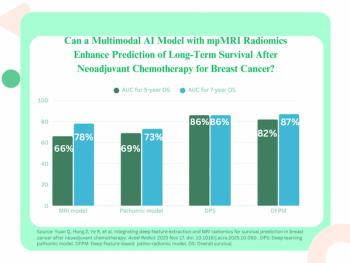
MRI proves value in lymphoma staging
Whole-body MRI with a nonenhanced imaging sequence can provide accurate staging of lymphoma. Contrast agents and other improvements could take this accuracy even further, making MRI an alternative to CT and PET, according to researchers at Mater Misericordiae Hospital in Dublin.
Whole-body MRI with a nonenhanced imaging sequence can provide accurate staging of lymphoma. Contrast agents and other improvements could take this accuracy even further, making MRI an alternative to CT and PET, according to researchers at Mater Misericordiae Hospital in Dublin.
The clinical literature regards CT as the standard of care for the imaging-based staging of lymphoma. It also credits FDG-PET with making serious strides toward that goal, and researchers expect hybrid imaging to eventually become the gold standard. But either separately or together both PET and CT face a number of limitations, including exposure to ionizing radiation and imprecise FDG uptake in several organ systems.
Whole-body MR with short-tau inversion recovery (STIR) imaging has been shown to be a credible noninvasive alternative for lymphoma staging. The technique can be performed in a reasonable time, especially in young patients, according to the study (AJR 2005; 185:711-716).
Principal investigator Dr. Darren D. Brennan, a radiologist at the Mater Misericordiae Hospital, and colleagues enrolled 23 consecutive lymphoma patients in their study and compared multislice CT and MR scanning for staging of disease. They reported the presence or absence of disease in the lymph nodes and along several points including the head and neck, chest, abdomen, and pelvis.
They found that MRI matched CT's capabilities for staging and follow-up.
Even though MRI could not beat CT's sensitivity for lesions under 1 cm, it proved to be nearly 100% specific in lesions down to 1 mm. MRI correctly identified normal marrow in 16 patients and predicted bone marrow invasion in two cases missed by CT. This finding had implications for management.
Patients underwent MSCT scanning (4 x 2.5-mm slice acquisition) from skull to pubis. Investigators administered oral and IV contrast to 16 and seven patients, respectively. They excluded seven patients from head and neck CT examinations, as instructed by the referring oncologist.
All patients underwent 1.5T MR scanning on a moving table providing longitudinal and transverse fields-of-view of 200 cm and 53 cm, respectively. The scanning protocol included coronal and axial acquisition using turbo STIR (TR 4257 msec, TE 58 msec) and sagittal acquisition of the spine using a T1-weighted sequence.
Physicians generally interpret the size of affected lymph nodes on CT as a predictor of disease. They tend to rely much less on shape, diameter ratios, and contrast enhancement patterns. MRI can characterize lymphadenopathy on the basis of size as well, but it can also predict disease on the basis of signal intensity, the researchers said.
The technique showed some limitations. Whole-body MR imaging with STIR missed eight of nine lung nodules detected by CT. It also proved less effective for detection of abdominal disease. Further technique refinements, including the use of contrast agents, may take MRI's accuracy to the next level, according to the researchers.
While availability and cost remain problems, the increasing use of MRI could help improve access in the near future. For young patients, in particular, in whom extensive longitudinal follow-up is anticipated, whole-body MRI may offer an alternative nonionizing method of staging and disease surveillance, Brennan said.
In view of the emergence of PET/CT as the future imaging gold standard, comparative tests pitching hybrids versus MRI would be useful, he said.
For more information from the Diagnostic Imaging archives:
Newsletter
Stay at the forefront of radiology with the Diagnostic Imaging newsletter, delivering the latest news, clinical insights, and imaging advancements for today’s radiologists.

























